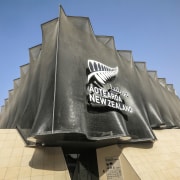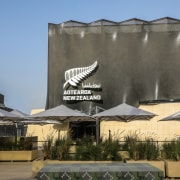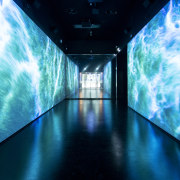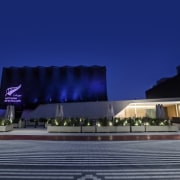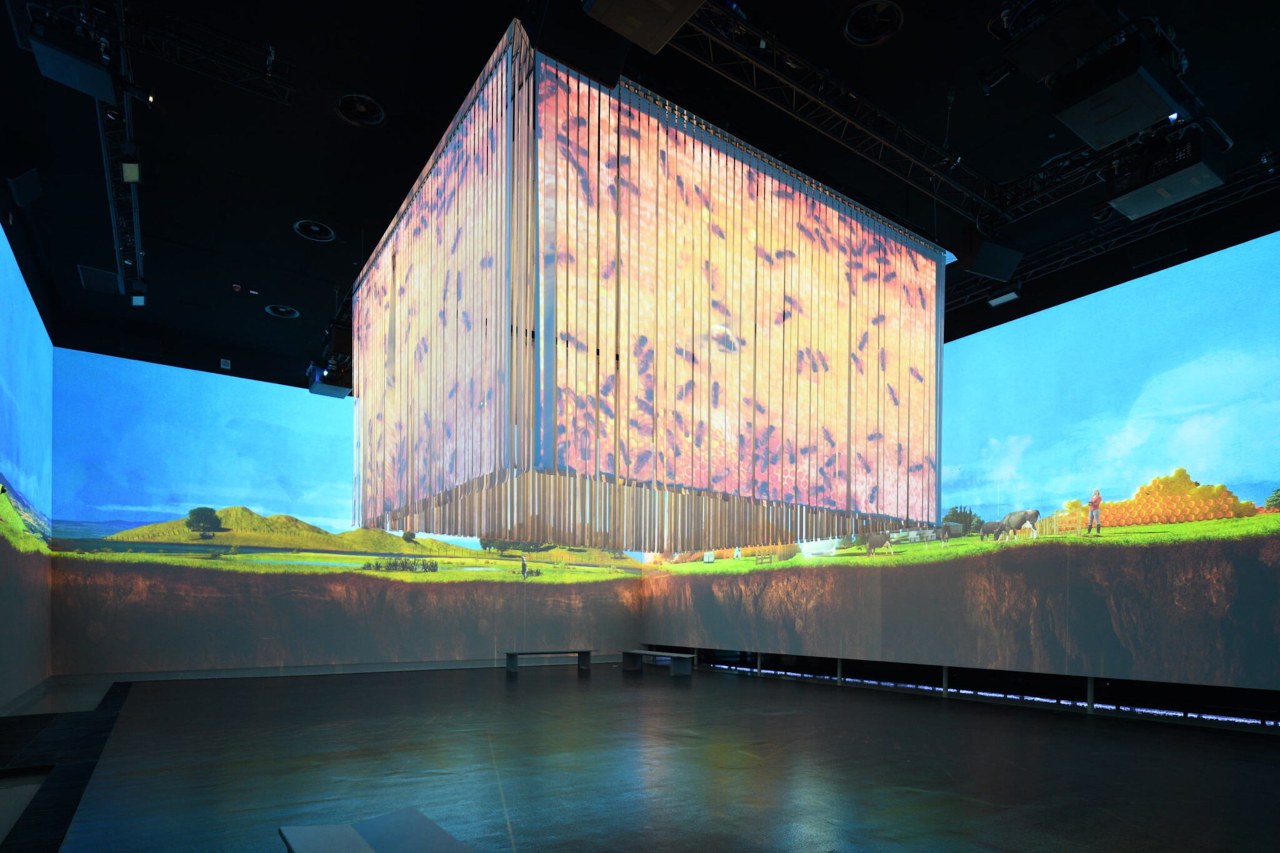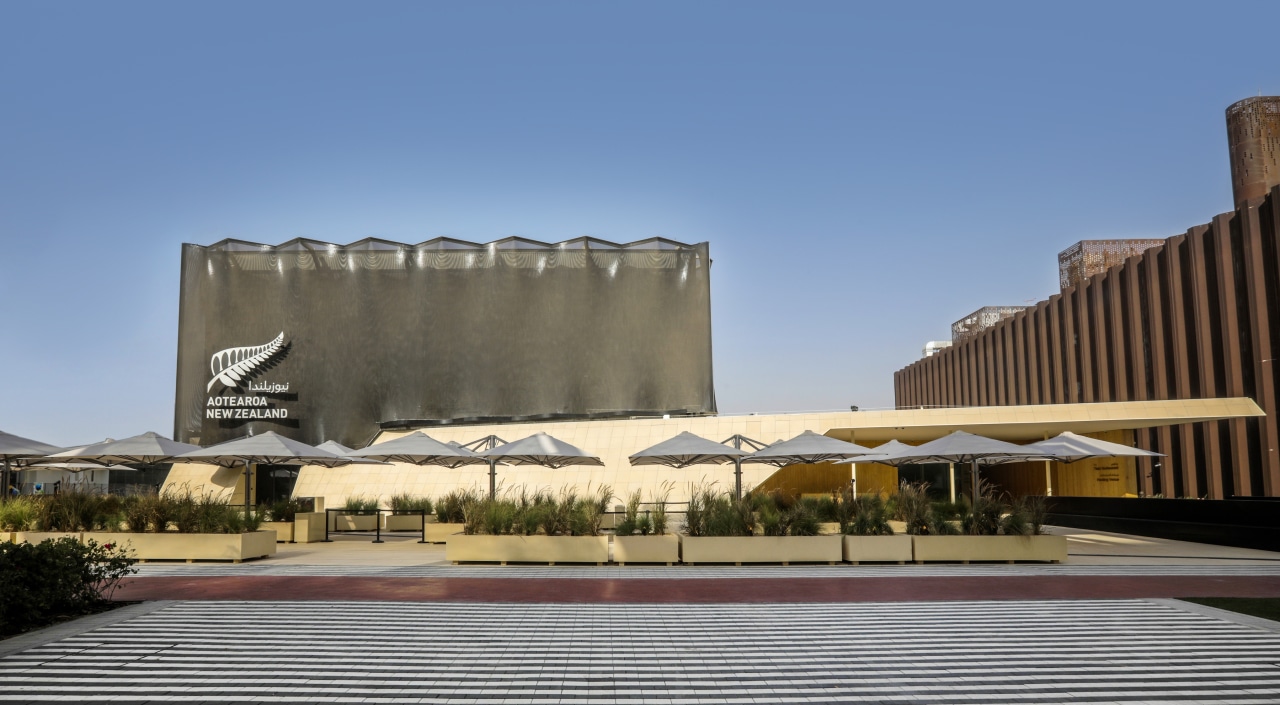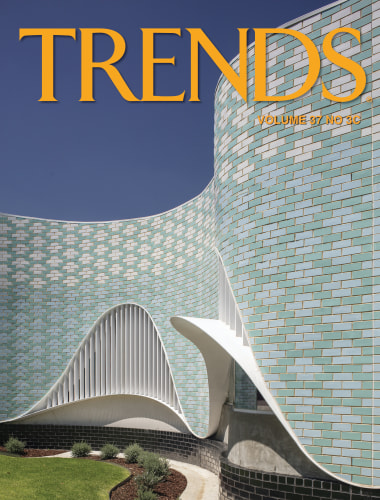New Zealand Expo pavilion has a life of its own
The New Zealand Pavilion, designed by Jasmax, for Expo 20 celebrates people and connecting to nature based on kaitiakitanga, the environmental ethos of Māori – an innovative mesh design is part of its kinetic façade
Pavilion designed by Jasmax
From NZ Expo team:
The New Zealand Pavilion, designed by Jasmax, has marked the completion of its exterior with the installation of a kinetic façade made from architectural mesh, Kaynemaile.
The façade’s movement signifies that the pavilion itself, is alive.
Moving in time with an audible pulse, the façade will invite the visitor to enter an immersive experience within the pavilion.
A living facade
The ‘living’ façade reinforces the New Zealand Pavilion’s theme of “Care for People and Place”, which is based on kaitiakitanga, the environmental ethos of Māori, the indigenous people of New Zealand Aotearoa.
And part of this is the understanding that humans and nature are inextricably connected.
By entering the pavilion, the visitor re-connects to the mauri, or life principle, inherent in nature’s order.
The New Zealand Pavilion story is inspired by the Whanganui River, which in 2017 was given legal personhood after decades of negotiation between the iwi (tribe) Te Āti Haunui-a-Pāpārangi and the New Zealand government.
The innovative legislation recognises the river as a living and indivisible physical as well as spiritual whole – Te Awa Tupua – flipping the existing paradigm by placing the River as the focus of human interaction in line with Māori values and worldview.
The pavilion's dramatic 14m-high River Room with water falling from 9m.
Clayton Kimpton, New Zealand’s Commissioner-General to Expo 2020 Dubai says that every element of the pavilion is interconnected; from the immersive visitor experience and storytelling rooms inside the pavilion, to the pulse, which starts in the river room and ripples all the way to the exterior façade.
“This is the life force of our story – a story of a nation of innovators who Care for People and Place."
Jasmax principal Matt Glubb says the mesh façade ties together the overarching experience of the pavilion.
“It not only expresses our interconnectedness, but also the idea that we are indivisible from the natural world, through its pulsating movement that extends from the centre of the building all the way to the exterior of the façade – making the building appear alive.
“I really hope that visitors are inspired by this experience to think about their own relationship to nature and how they can have a positive impact on the world around them,” Glubb says.
The façade visual effect is designed by Kayne Horsham, creator of the Kaynemaile mesh, which was inspired by his work designing chain mail on the Academy Award-winning Lord of the Rings trilogy.
“Significantly for the Middle East, the mesh also radically reduces by up to 70% the radiant heat transfer from direct sunlight to internal environments, thereby reducing pressure on installed cooling systems,” says Horsham.
The total pavilion footprint is about 2,000m². To date, more than 350,000 manpower hours have been spent on site since New Zealand first broke ground.
The journey for the New Zealand Pavilion began in May 2018, when the country unveiled the design of its national pavilion – a design created by a global multi-disciplinary consortium led by Jasmax architects.
The 2000m² pavilion features a visitor experience, a restaurant showcasing New Zealand food and beverage and hosting facilities and is in Expo 2020’s Sustainability District.
Keeping it real
Choreographer, creative force and five-time World Hip Hop dance champion Parris Goebel has curated New Zealand’s vibrant and contemporary entertainment and cultural programme for Expo 2020 Dubai, which places particular emphasis on dancers, singers and street artists and celebrates New Zealand’s unique talent, creativity and diversity.
Sustainability factors
- The New Zealand Pavilion has been designed to reduce energy use by 20% and water use by 50%
- The pavilion is powered by 100% renewable energy.
- Sustainably sourced materials with embodied carbon offset have been used within the pavilion and on the exterior.
- Abodo has supplied the beautiful Vulcan timber throughout the pavilion. The timber is harvested from FSC certified rapidly renewable New Zealand pine plantation forests and treated without the use of harmful chemicals.
- The design allows the minimum of 75% elemental building components to be easily disassembled, relocated, repurposed, recycled or returned to the manufacturer.
- Within the pavilion zero single-use plastics will be given to visitors.
- Waste planning ensures that 85% of pavilion waste will be diverted from landfill.
- The New Zealand Pavilion operations are also committed to waster eduction and have partnered with Method to make sure the pavilion visitors actively waste less and recycle more with their visible and beautiful recycling stations. The bins encourage accountability and action with a visible marker of commitment to sustainability. They are also made from NZ post-consumer recycled materials.
- Green thinking touches are everywhere. The pavilion restaurant, Tiaki, features light fixtures were designed and built by David Trubridge. The Navicula lights are inspired by microscopic diatoms which live in water and produce 50% of the air we breathe.
- Scion – a Crown research institute specialising research, science and technology development for forestry, wood products, wood-derived materials, and other biomaterial sectors – contributed to developing a custom biopolymer David Trubridge light fitting for the pavilion containing paua shells.
- New Zealand’s participation in Expo 2020 will be carbon neutral and has achieved a Toitū carbonzero event certification working with Toitū Envirocare.
- The 3-Dimensional sound absorbing panels in the quiet and contemplative atmosehere of the 'reset room' were supplied by T&R Interior Systems and are created from New Zealand strong wool. Using wool in this improves the wellness factor in buildings in terms of noise pollution and using a recycled natural product benefits the planet also.
- The Noho ‘move’ chair in the pavilion is made from up-cycled waste plastic like discarded fishing nets and end-of-life carpet. Designed by Formway, and a 2020 winner of Best and Good Design awards, the chair rocks and flexes to encourage natural movement.
About Expo 2020 Dubai
Expo 2020 Dubai is the first World Expo to be held in the Middle East, Africa or South Asia region. 191 nations are participating in Expo 2020, with country pavilions that showcase achievements, creativity, and innovations.
Expo 2020 was postponed, due to Covid-19, and now runs from 1 October 2021 to 31 March 2022.
Credit list
Project
Cultural design
Kinetic facade design
Quantity surveyors
Entertainment and cultural programme for NZ pavilion
Designed by: Jasmax
Story by: Trendsideas
Home kitchen bathroom commercial design
At one with the Amazon
Contrast and connection
Masculine meets mixed use


